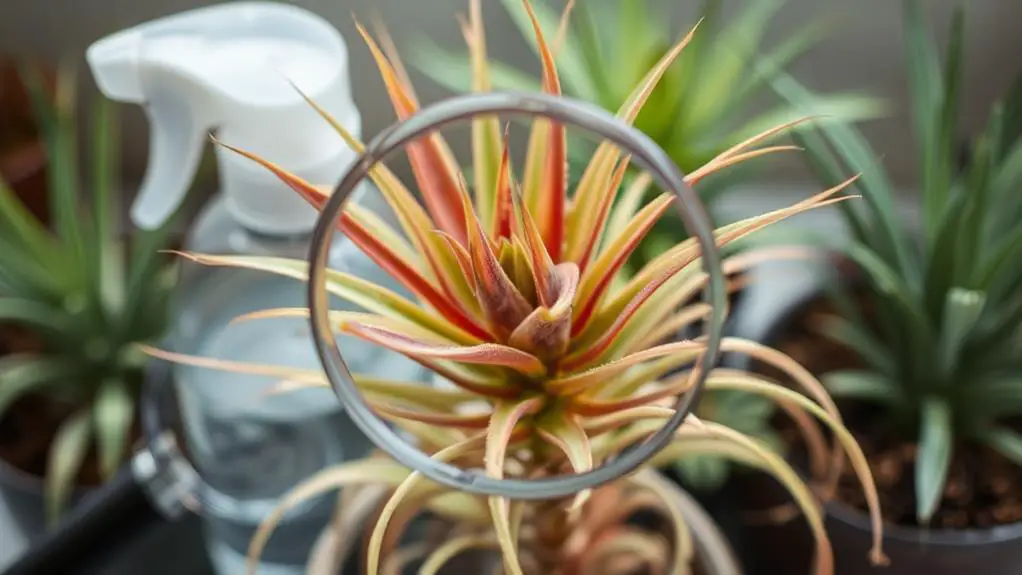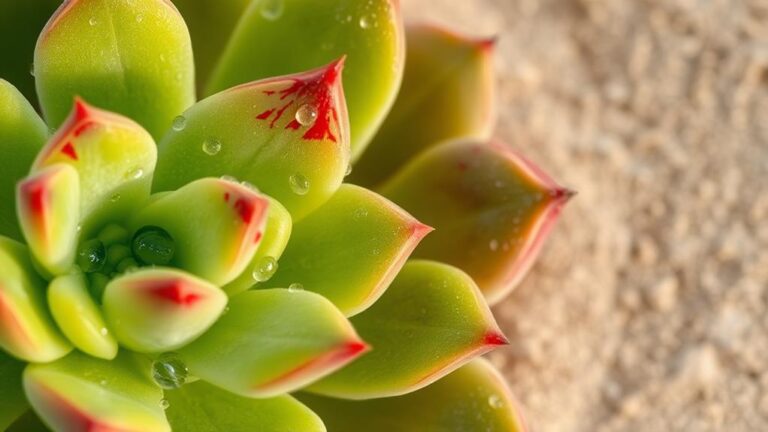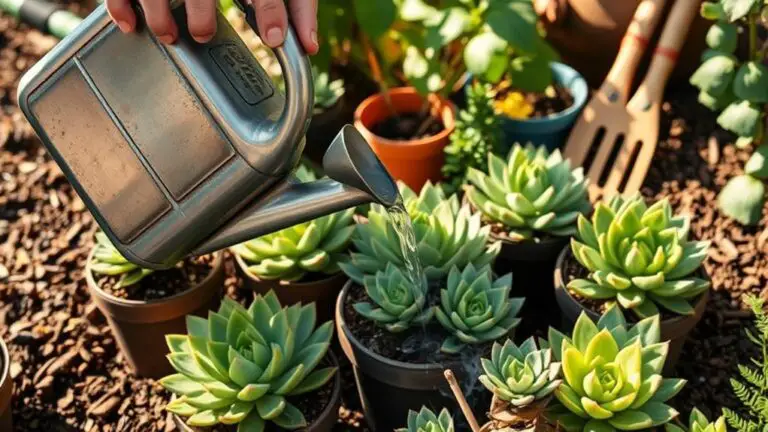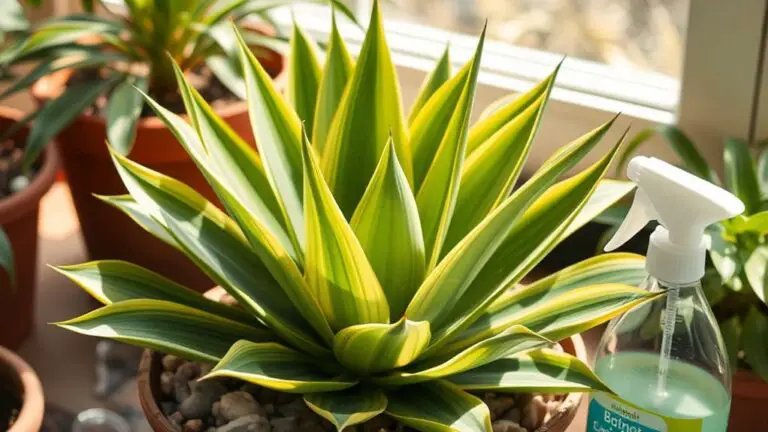Diagnosing What’s Wrong With My Air Plant
You've noticed your air plant isn't looking its best, and you're wondering what might be wrong. Is it overwatered, underwatered, or perhaps suffering from poor light conditions? Maybe pests are the culprits, or it's simply part of its natural life cycle. Each issue manifests in distinct symptoms, and understanding these can guide you toward the right solution. But before you take any steps, it's essential to pinpoint the exact problem. So, how do you accurately diagnose your air plant's woes? Let's explore the signs and symptoms in detail.
Watering Issues

Watering issues are a common challenge when caring for air plants, with both overwatering and underwatering leading to significant problems.
Overwatering can cause symptoms like a brown or black base, mushy texture, leaf loss, and potential rot. On the other hand, underwatering manifests as curving leaves and brown leaf tips.
To maintain proper moisture levels, you should soak your air plants for 20-30 minutes every 1-2 weeks, then shake off excess water. Ascertain the drying time doesn't exceed 3 hours.
Consistent watering habits are essential; neglecting them can result in dry rot. Recognize symptoms early—curled leaves and softness mean immediate hydration is needed.
Prevent rot by drying plants upside down after watering.
Environmental Factors
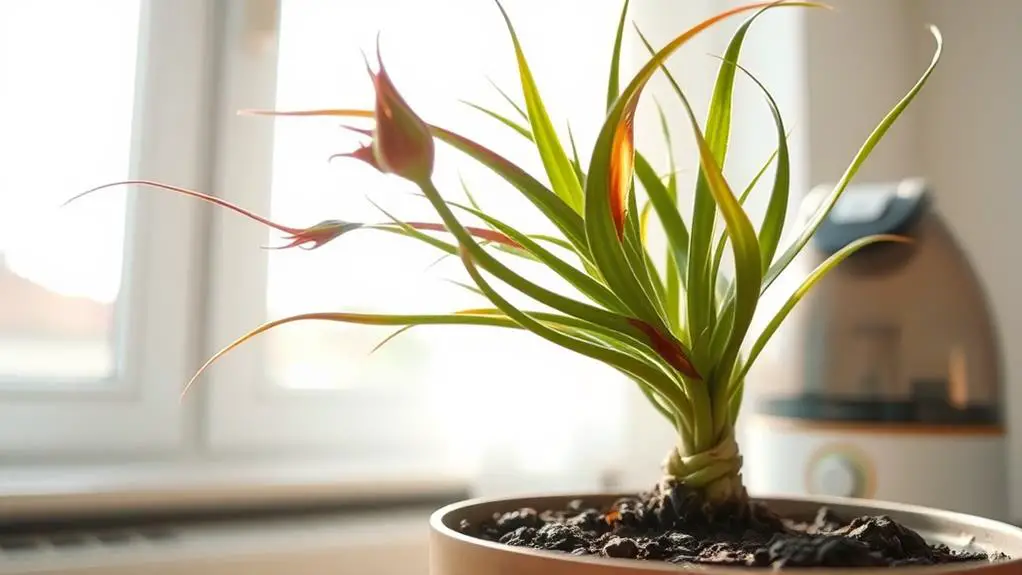
Environmental factors play a critical role in the health and importance of your air plants. Guaranteeing ideal temperatures between 65-85°F helps avoid issues like sunburn or rot.
It's essential to provide bright, filtered sunlight for 4-6 hours daily. Poor light exposure can cause yellowing leaves and inward curling, indicating environmental stress.
Airflow is equally important. Placing air plants in sealed containers can lead to rot due to poor air circulation, hindering healthy growth. Make certain your plants get plenty of fresh air.
Finally, if you notice curling leaves, it might signal dehydration from insufficient water. Regularly assess and adjust these conditions to keep your air plants thriving.
Light Requirements
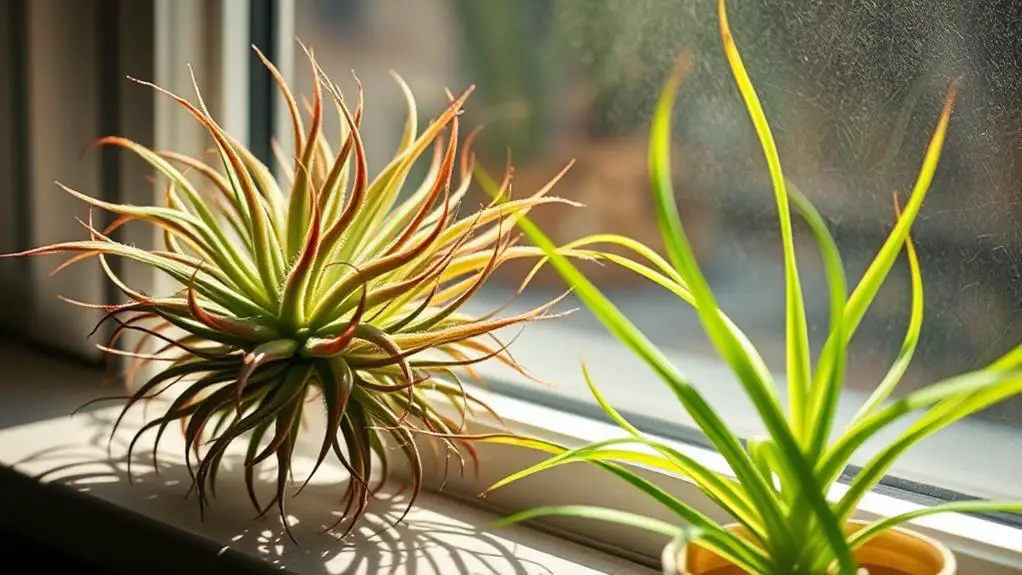
For air plants to thrive, they need bright, indirect sunlight for about 4-6 hours daily. Keep in mind, inadequate light exposure can make the leaves curl inward and lose their vibrant color. On the flip side, direct sunlight can burn the leaves, causing brown spots and dried marks. Different species have various light needs, especially those from tropical areas, which often require more light than you might think. Regularly checking and adjusting the light conditions will help your air plants remain healthy and avoid plant rot. Here's a quick guide:
| Symptom | Cause | Solution |
|---|---|---|
| Curling Leaves | Insufficient Light | Increase indirect light |
| Brown Spots | Direct Sunlight | Move to a shaded area |
| Fading Color | Lack of Light | guarantee 4-6 hours indirect light |
Pests and Diseases
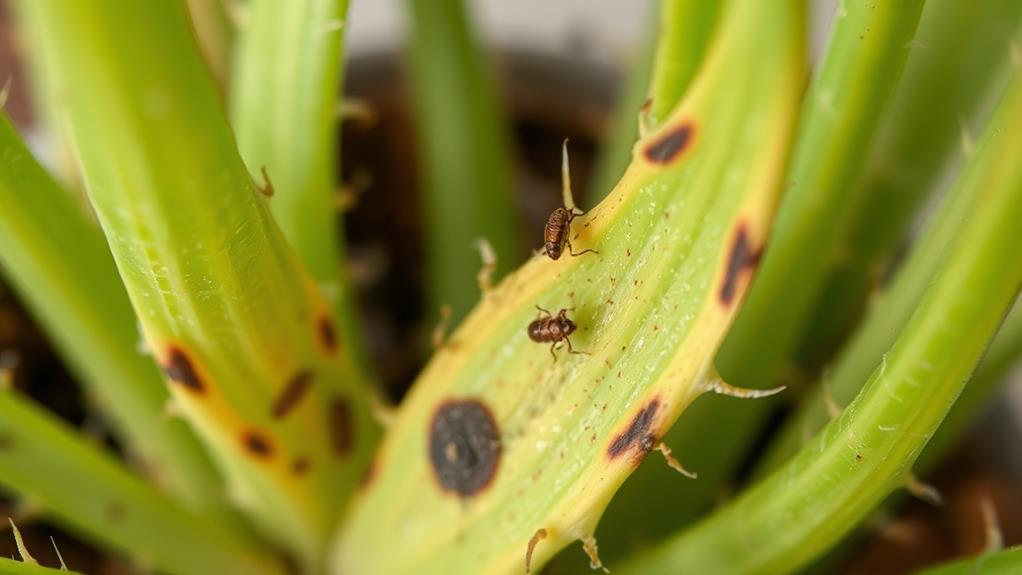
Air plant pests and diseases can be a significant concern for plant enthusiasts. Pests like mealybugs and scale insects can wreak havoc on your air plants.
Mealybugs look like white, waxy cotton and can be treated with rubbing alcohol on a Q-tip. Scale insects, which appear as tiny shell-like bumps, can cause leaves to turn yellow and deteriorate if not removed.
Symptoms of disease include black or brown spots on the leaves and decay at the base, often due to overwatering. Regularly check your air plants for pests and any signs of trouble.
Natural Life Cycle
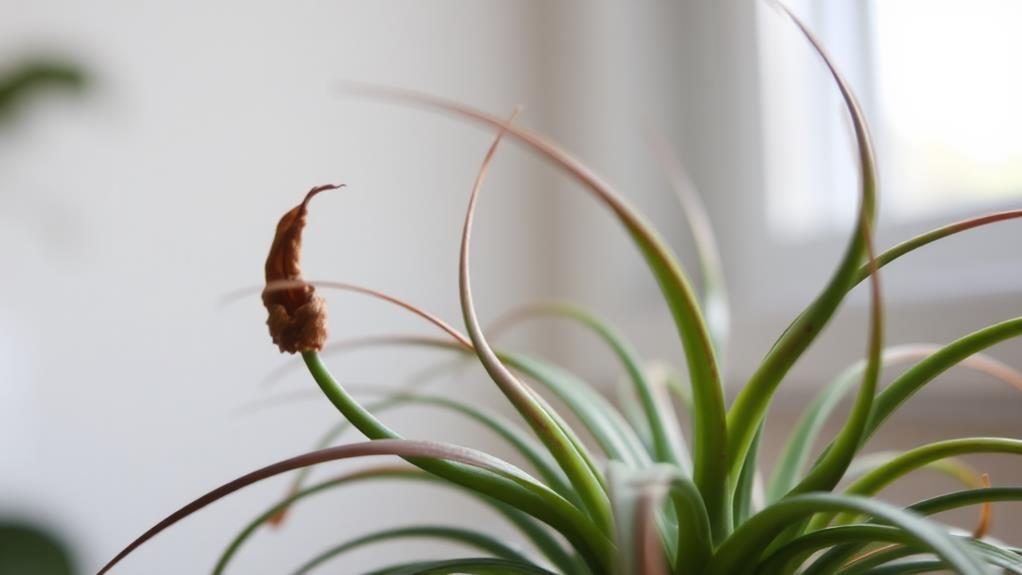
After addressing pests and diseases, let's look at the natural life cycle of air plants. These plants can live for several months to several years.
They produce 3-8 offspring, known as pups, after flowering. Once the mother plant blooms, it may start to decline. It redirects its energy to the pups, which is normal. You might notice the mother plant turning brown and drying out. This is part of its natural life cycle.
Understanding this helps you adjust watering and care. The pups can survive independently once they mature.
Frequently Asked Questions
What Does a Sick Air Plant Look Like?
A sick air plant can have curled leaves from dehydration, brown tips from too much sun, soft bases from rot, or yellowing leaves from poor light. Watch for waxy coatings indicating pests like mealybugs.
How to Tell if Your Air Plant Is Dying?
You can tell if your air plant is dying by looking for browning leaf tips, curling leaves, yellowing leaves, or a mushy base. These symptoms often result from improper watering, incorrect light levels, or dehydration.
What Does an Overwatered Air Plant Look Like?
An overwatered air plant shows soft, mushy bases and may have easily removable leaves. You'll notice black or brown spots, a foul smell, and leaf loss. To prevent this, soak it weekly and guarantee proper drying.
How Do You Rejuvenate an Air Plant?
To rejuvenate your air plant, soak it in filtered water for 20-30 minutes weekly, place it in bright, indirect sunlight, and increase humidity. Trim dead leaves and check for pests to keep it healthy.
Conclusion
By keeping an eye on your air plant's watering, light, and environment, you'll quickly spot any issues. Don't forget to check for pests too! If you notice any changes, like curled leaves or yellowing, adjust care as needed. Remember, air plants are resilient, and with a bit of attention, they'll thrive. You're doing great, and with these tips, your air plant will soon be healthy and happy again. Keep up the good work!

